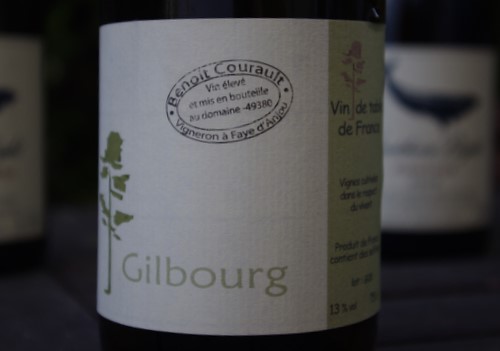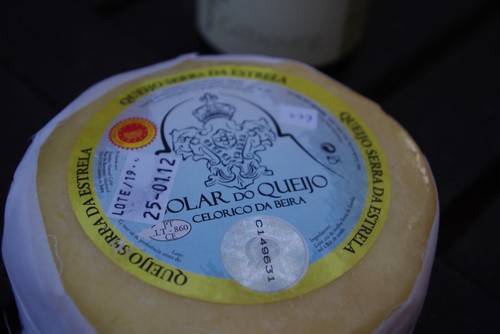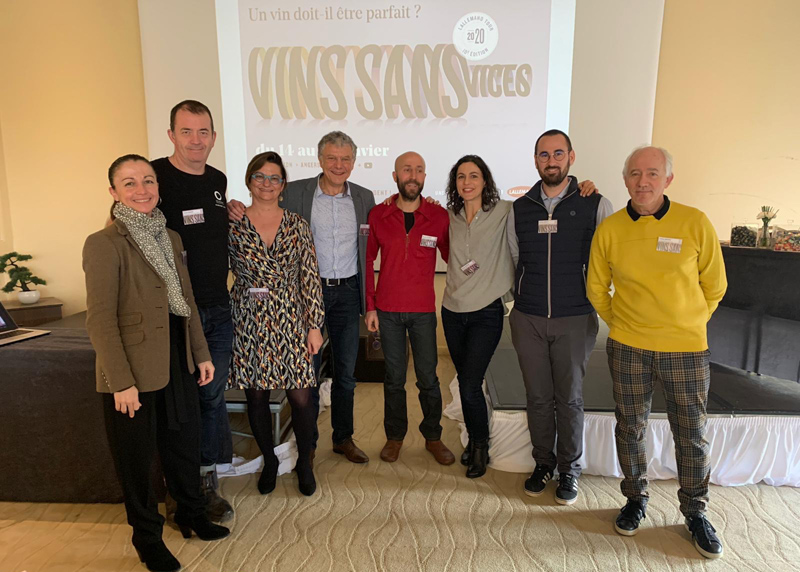Wine and cheese. Not always a great match, but here’s a combination that worked well. Queijo de Serra da Estrela is a fantastic cheese from Portugal. It’s made in the Beiras region, on the border with the Dao wine region, from sheep’s milk. The sheep are farmed on the foothills of the Serra da Estrela (‘star mountain’), which is a beautiful area. The cheese itself varies from quite runny to semi-hard, depending on how old it is. You want to get it when it is of the consistency that you can scoop it out easily with a spoon.
The wine? It’s one of those natural wines that will divide people. Many will take a sniff and declare it oxidised. There are certainly some oxidative characters, but once you get past these, I reckon it is quite a serious Chenin. Layers of flavour and complexity develop. I wouldn’t foist this on everyone, but I reckon that open-minded tasters will recognize its qualities – it’s one of those wines that keeps changing in the glass, demonstrating new facets.
Benoit Courault Gilbourg Vin de Table de France NV
This may be vin de table, and thus bear no appellation or vintage, but it’s from the 2008 vintage, and is a Chenin Blanc from Anjou. It’s made from 60 year old vines. Intitially a little volatile on the nose, this opens out to reveal notes of nuts, spice, apple and pear. It’s nicely textured with distinctive minerality, as well as a hint of matchstick and a bit of grippiness. It’s long and complex, revealing extra dimensions in the glass. It would be easy to miss this wine if you just did a sniff and slurp, but it’s actually profound. 92/100 (UK agent Les Caves de Pyrene)
Find this wine with wine-searcher.com
11 Comments on Natural Chenin and Queijo de Serra da Estrela – yum!


‘actually profound’ hmmm 😉
Weird…I did a Chenin post today also…of course a little different coming from Washington State 🙂
I have a similar experience with the 95 Musar white I’ve been tasting over the past days. I keep coming back to it as it keeps evolving, yet wouldn’t push it on anyone. It’s slightly oxidised, but in the good way that gives you more nuttyness that adds to the complexity. I’m also getting some tannins (your ‘grippiness?) that I attribute to the barrel fermentation; what do you think?
Anyway, another reason to give weird wines more attention than the regular sniff and slurp 😉
Many will take a sniff and declare it oxidised. Yes that’s because it is..
enough said.
Not oxidised at all ! Oxidised is a fault (for white wines this would be maderised). This wine’s secondary aromas are the result of a long ambient ferment which is traditional for Loire Chenin. It will certainly last twenty years. An oxidised/maderised wine wouldn’t last twenty minutes in the glass.
Oxidised is a fault, I agree. Oxidative characteristics are generally a result of a wine being oxidised. Secondary aromas (oxidative aromas) are nothing to do with a long ambient fermentation. Too many people with an interest in peddling ‘natural’ wines try to pass off any fault as acceptable. I would prefer it if you said as Jamie does that he can still enjoy this wine in spite of a challenging taste profile.
If it were oxidised, then you could open the bottle, take a glass, recork it, and revisit it in a week and nothing will have changed. But the fact that this wine can oxidise after bottling suggests that it is not oxidised. If you see what I mean.
I’m a Loire partisan and attracted to its chenin in its many guises. The Courault Gilbourg is one of my favorites. Jamie, you describe its profundity very well! Oh, and I once foisted this on friends who’d never had anything like it before, and they loved it.
An oxidised wine falls flat and short on your palate, with lifeless fruit. Hence a way to distinguish oxidative from oxidised is to pay attention to length and energy. This wine has both. I generally hate to describe aromas in wine, but in this I can’t get passed the salty (roasted) nut character which reminds me of other top quality oxidative wines like white riojas and top savagnin. It makes me think that the such complexity might well stem from both long fermentaions but also involvement of a complex set of yeast strings. Isn’t it so that inefficient yeasts enhance more aromatic precursors than extremely effecient ones?
Those of us who have been through the seemingly neverending humilation called oxidation in white burgundies will of course have noticed that oxidized bottles are very seldom identical in its level of oxidation after a week from opening the bottle. Usually it develops along the oxidative line and becomes even more oxidized as time passes. So, the fact that the Loire-wine in question gets oxidized after bottling doesn’t necessarily mean that it wasn’t oxidized in the first place, does it?
Dears, I like to buy your excellent cheese Oueijo Serra da Estrela. Do you know where I can buy it in Germany.